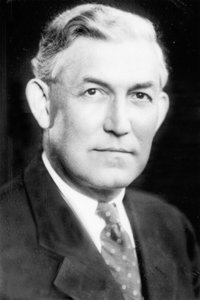| n | Euler pseudoprimes to base n |
| 1 | 9, 15, 21, 25, 27, 33, 35, 39, 45, 49, 51, 55, 57, 63, 65, 69, 75, 77, 81, 85, 87, 91, 93, 95, 99, 105, 111, 115, 117, 119, 121, 123, 125, 129, 133, 135, 141, 143, 145, 147, 153, 155, 159, 161, 165, 169, 171, 175, 177, 183, 185, 187, 189, 195, 201, 203, 205, 207, 209, 213, 215, 217, 219, 221, 225, 231, 235, 237, 243, 245, 247, 249, 253, 255, 259, 261, 265, 267, 273, 275, 279, 285, 287, 289, 291, 295, 297, 299, ... (all odd composites) |
| 2 | 341, 561, 1105, 1729, 1905, 2047, 2465, 3277, 4033, 4681, 5461, 6601, 8321, 8481, ... |
| 3 | 121, 703, 1541, 1729, 1891, 2465, 2821, 3281, 4961, 7381, 8401, 8911, ... |
| 4 | 341, 561, 645, 1105, 1387, 1729, 1905, 2047, 2465, 2701, 2821, 3277, 4033, 4369, 4371, 4681, 5461, 6601, 7957, 8321, 8481, 8911, ... |
| 5 | 217, 781, 1541, 1729, 5461, 5611, 6601, 7449, 7813, ... |
| 6 | 185, 217, 301, 481, 1111, 1261, 1333, 1729, 2465, 2701, 3421, 3565, 3589, 3913, 5713, 6533, 8365, ... |
| 7 | 25, 325, 703, 817, 1825, 2101, 2353, 2465, 3277, 4525, 6697, 8321, ... |
| 8 | 9, 21, 65, 105, 133, 273, 341, 481, 511, 561, 585, 1001, 1105, 1281, 1417, 1541, 1661, 1729, 1905, 2047, 2465, 2501, 3201, 3277, 3641, 4033, 4097, 4641, 4681, 4921, 5461, 6305, 6533, 6601, 7161, 8321, 8481, 9265, 9709, ... |
| 9 | 91, 121, 671, 703, 949, 1105, 1541, 1729, 1891, 2465, 2665, 2701, 2821, 3281, 3367, 3751, 4961, 5551, 6601, 7381, 8401, 8911, ... |
| 10 | 9, 33, 91, 481, 657, 1233, 1729, 2821, 2981, 4187, 5461, 6533, 6541, 6601, 7777, 8149, 8401, ... |
| 11 | 133, 305, 481, 645, 793, 1729, 2047, 2257, 2465, 4577, 4921, 5041, 5185, 8113, ... |
| 12 | 65, 91, 133, 145, 247, 377, 385, 1649, 1729, 2041, 2233, 2465, 2821, 3553, 6305, 8911, 9073, ... |
| 13 | 21, 85, 105, 561, 1099, 1785, 2465, 5149, 5185, 7107, 8841, 8911, 9577, 9637, ... |
| 14 | 15, 65, 481, 781, 793, 841, 985, 1541, 2257, 2465, 2561, 2743, 3277, 5185, 5713, 6533, 6541, 7171, 7449, 7585, 8321, 9073, ... |
| 15 | 341, 1477, 1541, 1687, 1729, 1921, 3277, 6541, 9073, ... |
| 16 | 15, 85, 91, 341, 435, 451, 561, 645, 703, 1105, 1247, 1271, 1387, 1581, 1695, 1729, 1891, 1905, 2047, 2071, 2465, 2701, 2821, 3133, 3277, 3367, 3683, 4033, 4369, 4371, 4681, 4795, 4859, 5461, 5551, 6601, 6643, 7957, 8321, 8481, 8695, 8911, 9061, 9131, 9211, 9605, 9919, ... |
| 17 | 9, 91, 145, 781, 1111, 1305, 1729, 2149, 2821, 4033, 4187, 5365, 5833, 6697, 7171, ... |
| 18 | 25, 49, 65, 133, 325, 343, 425, 1105, 1225, 1369, 1387, 1729, 1921, 2149, 2465, 2977, 4577, 5725, 5833, 5941, 6305, 6517, 6601, 7345, ... |
| 19 | 9, 45, 49, 169, 343, 561, 889, 905, 1105, 1661, 1849, 2353, 2465, 2701, 3201, 4033, 4681, 5461, 5713, 6541, 6697, 7957, 8145, 8281, 8401, 9997, ... |
| 20 | 21, 57, 133, 671, 889, 1281, 1653, 1729, 1891, 2059, 2413, 2761, 3201, 5461, 5473, 5713, 5833, 6601, 6817, 7999, ... |
| 21 | 65, 221, 703, 793, 1045, 1105, 2465, 3781, 5185, 5473, 6541, 7363, 8965, 9061, ... |
| 22 | 21, 69, 91, 105, 161, 169, 345, 485, 1183, 1247, 1541, 1729, 2041, 2047, 2413, 2465, 2821, 3241, 3801, 5551, 7665, 9453, ... |
| 23 | 33, 169, 265, 341, 385, 481, 553, 1065, 1271, 1729, 2321, 2465, 2701, 2821, 3097, 4033, 4081, 4345, 4371, 4681, 5149, 6533, 6541, 7189, 7957, 8321, 8651, 8745, 8911, 9805, ... |
| 24 | 25, 175, 553, 805, 949, 1541, 1729, 1825, 1975, 2413, 2465, 2701, 3781, 4537, 6931, 7501, 9085, 9361, ... |
| 25 | 217, 561, 781, 1541, 1729, 1891, 2821, 4123, 5461, 5611, 5731, 6601, 7449, 7813, 8029, 8911, 9881, ... |
| 26 | 9, 25, 27, 45, 133, 217, 225, 475, 561, 589, 703, 925, 1065, 2465, 3325, 3385, 3565, 3825, 4741, 4921, 5041, 5425, 6697, 8029, 9073, ... |
| 27 | 65, 121, 133, 259, 341, 365, 481, 703, 1001, 1541, 1649, 1729, 1891, 2465, 2821, 2981, 2993, 3281, 4033, 4745, 4921, 4961, 5461, 6305, 6533, 7381, 7585, 8321, 8401, 8911, 9809, 9841, 9881, ... |
| 28 | 9, 27, 145, 261, 361, 529, 785, 1305, 1431, 2041, 2413, 2465, 3201, 3277, 4553, 4699, 5149, 7065, 8321, 8401, 9841, ... |
| 29 | 15, 21, 91, 105, 341, 469, 481, 793, 871, 1729, 1897, 2105, 2257, 2821, 4371, 4411, 5149, 5185, 5473, 5565, 6097, 7161, 8321, 8401, 8421, 8841, ... |
| 30 | 49, 133, 217, 341, 403, 469, 589, 637, 871, 901, 931, 1273, 1537, 1729, 2059, 2077, 2821, 3097, 3277, 4081, 4097, 5729, 6031, 6061, 6097, 6409, 6817, 7657, 8023, 8029, 8401, 9881, ... |


